
Miracle Cure
by
William Rosen
Published 14 Apr 2017
As Almroth Wright no doubt realized, the institution that could claim penicillin for its own would be a repository of both public acclaim, and a greater share of the financial resources of philanthropies and government agencies. The ways in which a legitimate claim to discovery profited the discoverers of penicillin—like the discovery of Salvarsan or Prontosil before—remain huge, even without calculating the benefits to society at large. But those ways pale in comparison to the very tangible profits that would be generated by the discoveries that followed. FIVE “To See the Problem Clearly” The battles over credit for the discovery of penicillin were still a year in the future when Howard Florey left Peoria in the summer of 1941. He left Heatley behind to work with Moyer and the rest of the Northern Lab team, while he transformed himself into North America’s most prominent penicillin evangelist.
…
This is a nontrivial ability that offers some protection against infection, particularly in newborn children, but isn’t much use against most pathogens. The same can’t be said of Fleming’s next encounter with good fortune, which occurred some five years later. Credit: Wellcome Library, London Alexander Fleming, 1881–1955 The canonical story of the discovery of penicillin is eerily similar to the one describing the chance discovery of lysozyme. As Fleming later recalled, he had sloppily left Petri dishes containing staph cultures unattended on a bench in his St. Mary’s lab when he departed for vacation in August 1928. When he returned, on September 3, he found that one of the Petri dishes had been contaminated, again via a conveniently open window, this time by a fungus.
…
He was painfully shy, and had no interest in discussing either his methods or results, which is why it’s at least plausible that Fleming’s penchant for games, combined with his natural reticence, persuaded him to cast the lysozyme discovery as if it had been the equivalent of drawing a winning hand at bridge. Understanding why he would trot out such a similar story for the far more important discovery of penicillin requires some additional context. The first, and most important, fact about the discovery is that hardly anything about it was documented at the time. Six months would pass before Fleming published his results in 1929, and penicillin would remain at best a novelty, at worst a dead end, for another decade.

The Rise and Fall of Modern Medicine
by
M. D. James le Fanu M. D.
Published 1 Jan 1999
I found it informative and intriguing’ THOMAS STUTTAFORD in the Literary Review ‘The skill [of medical journalism] is to write with humanity and objectivity, a dual responsibility brilliantly fulfilled by the author . . . This book is well worth reading just for the brilliant pen portraits of Le Fanu’s twelve definitive moments of medical advance. Some, like the discovery of penicillin, are well known, but even here the author has a way of encapsulation that is full of insights and unusual detail . . . It would be possible to close the book here, just over halfway through, and still feel you had had your money’s worth. But the challenge is in the second half, where three much hyped hopes for the future are brought down to earth . . .
…
There were, however, three ‘new’ diseases that had recently emerged to become major causes of untimely death in middle age: peptic ulcers, heart attacks and cancer of the lung. Their cause was not known and, as ever, there were no effective treatments. The purpose of this book is to describe what happened next, starting with an account of the ‘twelve definitive moments’ – the ‘canon’ – of modern medicine. 1 1941: PENICILLIN The discovery of penicillin is, predictably, both the first of the twelve definitive moments of the modern therapeutic revolution and the most important. Penicillin and the other antibiotics that followed rapidly in its wake cured not only the acute lethal infections such as septicaemia, meningitis and pneumonia, but also the chronic and disabling ones such as chronic infections of the sinuses, joints and bones.
…
If a naturally occurring non-toxic chemical compound produced by a species of fungus such as penicillin could make the difference between whether a child with meningitis should live or die, it was only natural to wonder whether other ghastly and baffling illnesses might not yield to similar simple solutions. Perhaps cancer might be curable, or schizophrenia might be treatable? In the public imagination antibiotics came to symbolise the almost limitless beneficent possibilities of science. Yet this is not entirely merited, for, as will be seen, the discovery of penicillin was not the product of scientific reasoning but rather an accident – much more improbable than is commonly appreciated. Further, at the core of antibiotics lies an unresolved mystery: why should just a few species of micro-organisms produce these complex chemical compounds with the capacity to destroy the full range of bacteria that cause infectious disease in humans?

The Open Revolution: New Rules for a New World
by
Rufus Pollock
Published 29 May 2018
That too needs examination, because almost every innovative medicine we now have started with work in a government-funded research lab – and many of them were completed there too. This is especially true of our greatest advances, from Pasteur’s germ theory to Fleming’s discovery of penicillin and right through to today’s work on gene therapies and predictive medicine. Alexander Fleming’s work was paid for by public institutions. Accordingly, he did not hide or patent the discovery of penicillin, but published it for everyone to test, use and build upon, so helping to save millions of lives. On the same principle, current and future work that is paid for collectively by the public is usually Openly available.
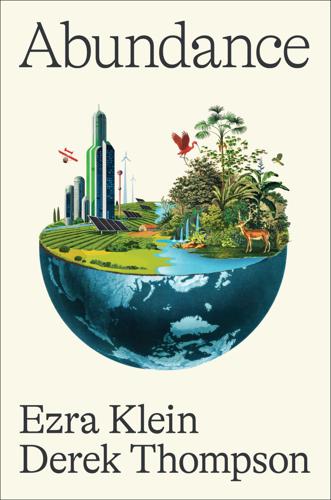
Abundance
by
Ezra Klein
and
Derek Thompson
Published 18 Mar 2025
After nearly two years of work, they, too, were stuck. By the spring of 1941, with Europe submerged in war, five human patients in their experiments had been treated with penicillin. Two of them had died.4 * * * Let’s pause the narrative here, as strange as this interruption might seem. Fleming’s discovery of penicillin is world-famous: cherished by scientists and hailed as one of the most significant breakthroughs in the history of health, or any other field. Florey’s portrait adorned the Australian $50 note for decades. Chain, along with Fleming and Florey, won the 1945 Nobel Prize in Physiology or Medicine.
…
It was one thing to make a small batch of penicillin in a little flask. But if you used the same ingredients to make larger amounts, microorganisms would mess up the mixture, producing a worthless sludge. (The historian James Phinney Baxter III elegantly described the irony: “The same accident of contamination which led to the discovery of penicillin very nearly prevented its use.”) With OSRD’s encouragement, scientists in Peoria, Illinois, discovered that adding “corn steep”—water soaked with corn—could increase penicillin production tenfold.14 The military collected and tested new strains of mold, which, mixed in the larger vats and with further modifications to the process, made mass production possible.
…
For the Committee on Medical Research, see 58–59 and elsewhere throughout; for malaria, see 53, https://www.nsf.gov/about/history/EndlessFrontier_w.pdf. 14. Baxter, Scientists Against Time, Kindle, 528, and see 522–27. 15. Baxter, Scientists Against Time, Kindle, 530–32. 16. Christen Rayner, “How the Discovery of Penicillin Has Influenced Modern Medicine,” Oxford Scientist, June 1, 2020, https://oxsci.org/how-penicillin-has-influenced-modern-medicine/. 17. Derek Thompson, “Why the Age of American Progress Ended,” Atlantic, December 12, 2022, https://www.theatlantic.com/magazine/archive/2023/01/science-technology-vaccine-invention-history/672227/. 18.
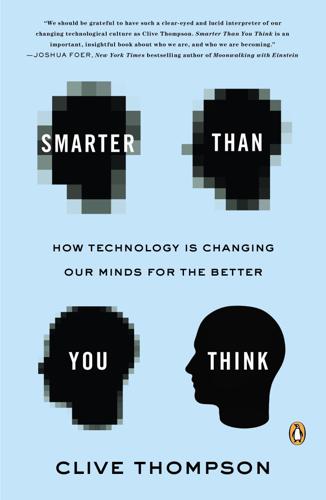
Smarter Than You Think: How Technology Is Changing Our Minds for the Better
by
Clive Thompson
Published 11 Sep 2013
Because they want the fame of discovery, once they learn someone else is working on a similar problem, they’re as liable to compete as to collaborate—and they’ll bicker for decades over who gets credit. The story of penicillin illustrates this as well. Three decades after Duchesne made his discovery of penicillin, Alexander Fleming in 1928 stumbled on it again, when some mold accidentally fell into a petri dish and killed off the bacteria within. But Fleming didn’t seem to believe his discovery could be turned into a lifesaving medicine, so, remarkably, he never did any animal experiments and soon after dropped his research entirely.
…
Merton, “Singletons and Multiples in Scientific Discovery: A Chapter in the Sociology of Science,” Proceedings of the American Philosophical Society 105, no. 5 (October 13, 1961): 470–86. Merton discusses the mathematicians on page 479. the tragic story of Ernest Duchesne: My account of Duchesne’s discovery of penicillin comes from Serge Duckett, “Ernest Duchesne and the Concept of Fungal Antibiotic Therapy,” The Lancet 354 (December 11, 1999): 2068–71; Kurt Link, Understanding New, Resurgent, and Resistant Diseases: How Man and Globalization Create and Spread Illness (Westport, CT: Greenwood Publishing Group, 2007), 13–14; Paul André, M.
…
consider what happened next to Ory Okolloh: My account of the origins of Ushahidi draws from Ory Okolloh, “Update Jan 3 11:00 pm,” Kenyan Pundit, January 3, 2008, accessed March 22, 2013, www.kenyanpundit.com/2008/01/03/update-jan-3-445-1100-pm/; Erik Hersman, “It’s Not about Us, It’s about Them,” WhiteAfrican, January 4, 2008, accessed March 22, 2013, whiteafrican.com/2008/01/04/its-not-about-us-its-about-them/; Ted Greenwald, “David Kobia, 32,” MIT Technology Review, September 2010, www2.technologyreview.com/tr35/profile.aspx?trid=947; and an e-mail communication with Hersman. Three decades after Duchesne made his discovery of penicillin, Alexander Fleming in 1928: Alexander Kohn, Fortune or Failure: Missed Opportunities and Chance Discoveries (Cambridge, MA: Blackwell, 1989), 76–96. “most of the smartest people work for someone else”: Lewis DVorkin, “Forbes Contributors Talk About Our Model for Entrepreneurial Journalism,” Forbes, December 1, 2011, accessed March 22, 2013, www.forbes.com/sites/lewisdvorkin/2011/12/01/forbes-contributors-talk-about-our-model-for-entrepreneurial-journalism/.
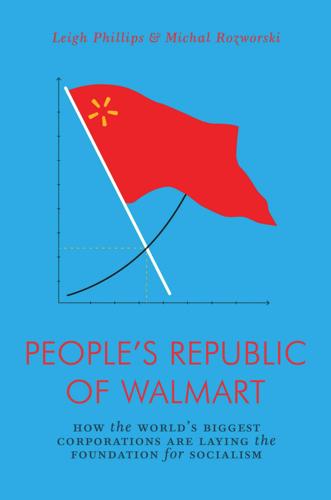
The People's Republic of Walmart: How the World's Biggest Corporations Are Laying the Foundation for Socialism
by
Leigh Phillips
and
Michal Rozworski
Published 5 Mar 2019
Prior to the advent of antibiotics, unless you had surgery, mortality from pneumonia was 30 percent, and from appendicitis or a ruptured bowel, 100 percent. Before Alexander Fleming’s serendipitous discovery of penicillin, patients with blood poisoning contracted from a mere cut or scratch filled hospitals, although doctors could do next to nothing for them. The first recipient of penicillin, forty-three-year-old Oxford police constable Albert Alexander, had scratched the side of his mouth while pruning roses. The scratches developed into a life-threatening infection, with large abscesses covering his head and affecting his lungs. One of his eyes had to be removed. The discovery of penicillin may have been made by a Scotsman, but in 1941, with much of the British chemical industry tilted toward the war effort and London’s defeat at the hands of Hitler a real possibility, it was clear that large-scale production of penicillin would have to be moved to the United States.

Human Frontiers: The Future of Big Ideas in an Age of Small Thinking
by
Michael Bhaskar
Published 2 Nov 2021
Between the late nineteenth century and the present, human life expectancy underwent a revolution, underpinned by a series of astonishing advances in medical science and public health. The first real pharmaceutical product, the drug Salvarsan, based on a compound synthesised in 1907, offered a cure for that old scourge syphilis. Three and a half decades later came an even bigger breakthrough: the discovery of penicillin and the age of antibiotics and mass medicine. Although Alexander Fleming made his famous discovery of a bacterium-killing mould at St Mary's Hospital, London, in 1928, it was 1941 before the first person, a policeman called Albert Alexander, was treated with penicillin after a scratch from a rose bush became badly infected.4 Alexander's experience is a stark reminder of how easily infection used to kill.
…
A study published in the Annals of Oncology concluded that of forty-seven drugs funded out of a special NHS funding pool, only eighteen increased survival rates and even then by just three months; the rest basically did nothing, but came with a host of side effects.28 But the news here is hopeful. We have, perhaps, a textbook big idea in the form of immunotherapy: treatments promising to revolutionise the attritional ‘war on cancer’. Some researchers even compare it to the discovery of penicillin: a turning point that will forever transform the field and change countless lives.29 Immunotherapy is based on a sophisticated understanding of the immune system's molecular biology, homing in on T-cells, a kind of white blood cell. Over the last thirty years researchers have realised that cancer plays tricks with the T-cells, using the immune system's own safety checks against it.
…
And with its Covid-19 vaccine, it has scored a medical research triumph. Beneath the fusty veneer is an organisation experiencing meteoric growth across all its key measures. It has never produced so much academic work, of such high quality. Yet it has taken eighty years for Oxford to match the discovery of penicillin. And why doesn't Oxford win more Nobel prizes when, on the face of it, it is so much better equipped? With respect to the biggest ideas of all – whether in medical research, philosophy or English literature – it has made little more impact than in the 1930s. When it comes to one university at least, there seems to be diminishing returns.

Viruses: A Very Short Introduction (Very Short Introductions)
by
Crawford, Dorothy H.
Published 27 Jul 2011
Most transmission occurs in the few months following primary infection when the viral load is extremely high but when most people are unaware of their infection. More effective screening programmes of at-risk groups, including opt-out testing, would pick up these early infections and allow early treatment. Antiviral agents For almost 40 years after the discovery of penicillin in 1945, bacterial infections could be cured with the appropriate antibiotic, while most virus infections were untreatable. This contrast relates to the biological differences between bacteria and viruses and in the way they cause disease. Pathogenic bacteria are mostly free-living, single-celled organisms that can invade and multiply in the body, so causing disease.
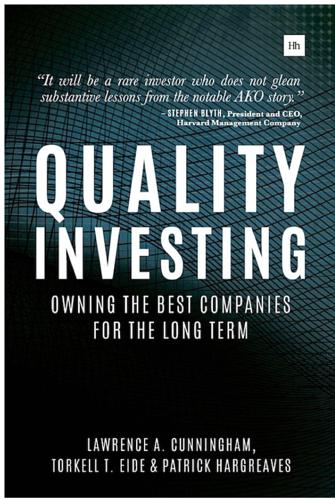
Quality Investing: Owning the Best Companies for the Long Term
by
Torkell T. Eide
,
Lawrence A. Cunningham
and
Patrick Hargreaves
Published 5 Jan 2016
The important lesson for investors is that the value of owning the highest quality company rises with cyclicality, as these companies tend to be better equipped to deal with it and capitalize on it. B. Technological Innovation The word innovation carries positive connotations, along with gratitude toward great inventors who have improved life, such as Alexander Fleming’s discovery of penicillin, Thomas Alva Edison’s light bulb and Robert Noyce’s integrated circuit. But, at least for capitalists, innovation is two-edged: while great improvements create new fortunes and even new industries, they often decimate others. Innovation can be such a brutal and destructive force for businesses that we often avoid industries where the risk of significant technological innovation is high.
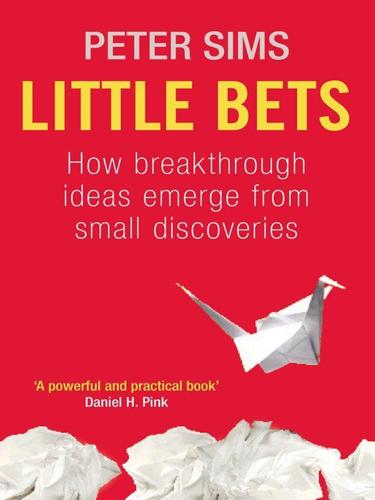
Little Bets: How Breakthrough Ideas Emerge From Small Discoveries
by
Peter Sims
Published 18 Apr 2011
It’s a thought-provoking intellectual adventure. One of the points that Taleb highlights is that, when operating within a high degree of uncertainty, one should experiment including to find what Taleb calls inadvertent discoveries. Countless innovations have happened this way, including Alexander Fleming’s discovery of penicillin, which he found in a mold that had contaminated another experiment. Thomke, Stefan. Experimentation Matters. Cambridge, MA: Harvard Business School, 2003. Thomke had done valuable work on business experiments, especially within technology. He focuses on industries like integrated circuits, and presents impressive research about approaches to developing ideas that are experimental in their nature, including the role of modeling and simulation technologies like CAD to aid in that process.
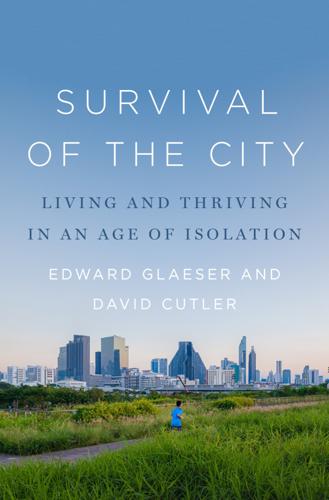
The Survival of the City: Human Flourishing in an Age of Isolation
by
Edward Glaeser
and
David Cutler
Published 14 Sep 2021
At least one set of scholars has argued that Justinian’s Plague was “an inconsequential pandemic” because of the absence of physical evidence, such as in Mordechai et al., “The Justinianic Plague: An Inconsequential Pandemic?” the Arab conquests: Horgan. Antibiotics cure most cases: US Centers for Disease Control and Prevention, “Plague FAQ.” But Alexander Fleming only: Gaynes, “The Discovery of Penicillin—New Insights after More Than 75 Years of Clinical Use.” The same was true for COVID-19: Pfizer and BioNTech first announced a vaccine candidate was over 90 percent effective in early November 2020. Pfizer, “Pfizer and Biontech Announce Vaccine Candidate Against COVID-19 Achieved Success in First Interim Analysis from Phase 3 Study.”
…
Gates, Jonathan D., Sandra Arabian, Paul Biddinger, Joe Blansfield, Peter Burke, Sarita Chung, Jonathan Fischer, et al. “The Initial Response to the Boston Marathon Bombing: Lessons Learned to Prepare for the Next Disaster.” Annals of Surgery 260, no. 6 (December 2014): 960–66. https://doi.org/10.1097/SLA.0000000000000914. Gaynes, Robert. “The Discovery of Penicillin—New Insights after More Than 75 Years of Clinical Use.” Emerging Infectious Diseases 23, no. 5 (May 2017): 849–53. https://doi.org/10.3201/eid2305.161556. “Gentrification Is the True, Highest Form of Hate Crime!” Defend Boyle Heights, November 3, 2016. http://defendboyleheights.blogspot.com/2016/11/gentrification-is-true-highest-form-of.html.

The Singularity Is Nearer: When We Merge with AI
by
Ray Kurzweil
Published 25 Jun 2024
Computers embedded in smartphones have rapidly expanded market penetration in the developing world, and as of 2022 around two-thirds of the world’s population has at least one.[100] Households with Computers, US and Worldwide[101] Principal sources; US Census Bureau; International Telecommunication Union Life Expectancy As I discuss in more detail in chapter 6, most of our progress in disease treatment and prevention to date has been the product of the linear process of hit-or-miss efforts to find useful interventions. Because we have lacked tools for systematically exploring all possible treatments, discoveries under this paradigm have owed a lot to chance. Likely the most notable chance breakthrough in medicine was the accidental discovery of penicillin, which opened up the antibiotic revolution and has since saved perhaps as many as 200 million lives.[102] But even when discoveries aren’t literally accidental, it still takes good fortune for researchers to achieve breakthroughs with traditional methods. Without the ability to exhaustively simulate possible drug molecules, researchers have to rely on high-throughput screening and other painstaking laboratory methods, which are much slower and more inefficient.
…
Lewis, “Computer and Internet Use in the United States: 2015,” American Community Survey Reports ACS-37, US Census Bureau, September 2017, 4, https://www.census.gov/content/dam/Census/library/publications/2017/acs/acs-37.pdf; Martin, “Computer and Internet Use in the United States: 2018”; International Telecommunication Union, “Key ICT Indicators for Developed and Developing Countries, the World and Special Regions (Totals and Penetration Rates),” from ITU World Telecommunication/ICT Indicators Database, International Telecommunication Union, November 2020, https://www.itu.int/en/ITU-D/Statistics/Documents/facts/ITU_regional_global_Key_ICT_indicator_aggregates_Nov_2020.xlsx; “Statistics—Individuals Using the Internet,” International Telecommunication Union; International Telecommunication Union, “Key ICT Indicators for the World and Special Regions (Totals and Penetration Rates),” ITU World Telecommunication/ICT Indicators database, November 2022, updated February 15, 2023, https://www.itu.int/en/ITU-D/Statistics/Documents/facts/ITU_regional_global_Key_ICT_indicator_aggregates_Nov_2022_revised_15Feb2023.xlsx. BACK TO NOTE REFERENCE 101 “Drug Discovery and Development Process,” Novartis, YouTube video, January 14, 2011, https://www.youtube.com/watch?v=3Gl0gAcW8rw; Robert Gaynes, “The Discovery of Penicillin—New Insights After More than 75 Years of Clinical Use,” Emerging Infectious Diseases 23, no. 5 (May 2017): 849–53, http://dx.doi.org/10.3201/eid2305.161556; Sabrina Barr, “Penicillin Allergy: How Common Is It and What Are the Symptoms,” Independent, October 23, 2018, https://www.independent.co.uk/life-style/health-and-families/penicillin-allergy-how-common-symptoms-antibiotic-drug-bacteria-a8597246.html.
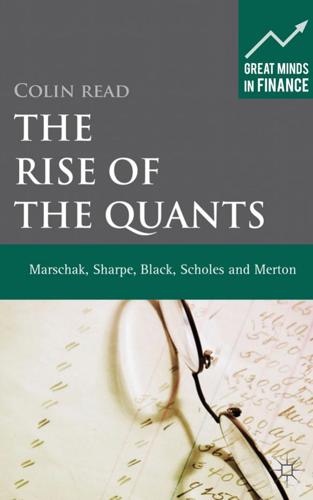
The Rise of the Quants: Marschak, Sharpe, Black, Scholes and Merton
by
Colin Read
Published 16 Jul 2012
There is perhaps no better example in the decision sciences of the evolution of ideas that are so revolutionary. Certainly, Newton’s equations of motion and Leibniz’s development of calculus, and the Nobel Laureate Einstein’s Theory of Relativity in 1905 and its E ⫽ mc2 prophecy had comparable transformational potency on society and our economy. So too was the discovery of penicillin attributed to the Nobel Laureate Alexander Fleming in 1928. These innovations revolutionized pure science, engineering, or humanity itself. However, before the rise of the quants, finance or economics had known no such profound insight that truly transformed markets. No other discovery or innovation has directly generated the sort of profits and economic activity that these innovations in finance created.

Critical: Science and Stories From the Brink of Human Life
by
Matt Morgan
Published 29 May 2019
‘In a brave series of experiments in 2014, American researchers injected the major component of Gram-negative bacteria cell walls, lipopolysaccharides, into healthy volunteers under close medical supervision.’ Dillingh, M. R. et al. Characterization of inflammation and immune cell modulation induced by low-dose LPS administration to healthy volunteers. Journal of Inflammation 11, 1697 (2014). ‘This would turn out to be the most useful mess in history.’ Diggins, F. W. The true history of the discovery of penicillin, with refutation of the misinformation in the literature. Br J Biomed Sci 56, 83–93 (1999). ‘This serendipitous mistake would save the lives of around 200 million people globally in the ninety years that followed.’ http://www.newworldencyclopedia.org/entry/Alexander_Fleming ‘Anne Miller, a 33-year-old nurse from New York, became the first patient to be treated with this new drug.’
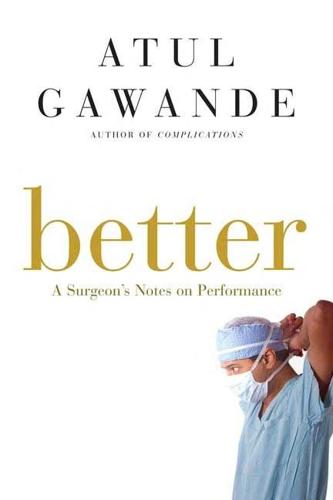
Better: A Surgeon's Notes on Performance
by
Atul Gawande
Published 2 Apr 2007
Hospital and state authorities investigated maternal deaths for aberrations from basic standards. Having these standards reduced maternal deaths substantially. In the mid-1930s, delivering a child had been the single most dangerous event in a woman's life: one in 150 pregnancies ended in the death of the mother. By the 1950s, owing in part to the tighter standards and in part to the discovery of penicillin and other antibiotics, the risk of death for a mother had fallen more than 90 percent, to just one in two thousand. But the situation wasn't so encouraging for newborns: one in thirty still died at birth--odds that were scarcely better than they were a century before--and it wasn't clear how that could be changed.
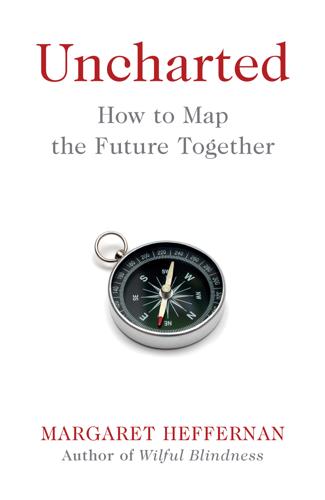
Uncharted: How to Map the Future
by
Margaret Heffernan
Published 20 Feb 2020
Just as the birth of the financial forecasting business depended on the simultaneous advent of trains, telegraph and statistics, periods of breakthrough require that knowledge, technology, resources and human ingenuity align. Everyone would like more of those moments. But other breakthroughs, like the discovery of penicillin or of cosmic microwave background radiation, exist at the opposite end of the spectrum: big, important discoveries that are flukes, neither predicted nor predictable. Everyone would love more of those too – but they aren’t planned; they emerge and are understood only retrospectively. There are also always ‘sleeping beauties’,17 big, powerful ideas – such as Mendel’s concept of inheritance via the mechanism that we now call genes – that need other notable discoveries before the full import of their thinking is understood.

The Microbiome Solution
by
Robynne Chutkan M.D.
Published 5 Aug 2015
As the next chapter will show, some of our “medical miracles,” when used indiscriminately, can end up contributing to, rather than curing, disease. CHAPTER 4 |||||||||||||||||||||||||||||||||||||||||| Pharmageddon and the Antibiotic Paradox THERE’S NO QUESTION that Alexander Fleming’s discovery of penicillin in 1928 is still one of the greatest contributions to medicine. It could have prevented events like the Great Plague of the 1600s, which wiped out a quarter of the population of Europe. Antibiotics prevent death from serious infection every day, sparing the human race untold misery. But in our current climate of overdiagnosis and overtreatment, they’re also used indiscriminately for a wide variety of minor, self-limited conditions.
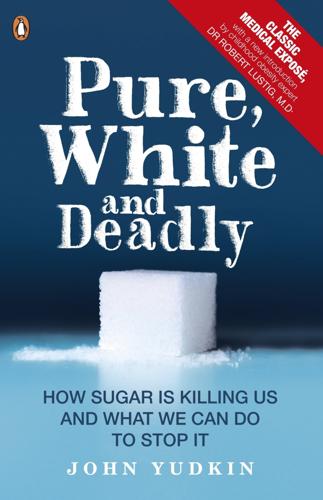
Pure, White and Deadly: How Sugar Is Killing Us and What We Can Do to Stop It
by
John Yudkin
Published 1 Nov 2012
The chairmen of this committee have always been distinguished scientists; none has been a professional nutritionist but they have all had some contact, if sometimes rather remote, with the subject of nutrition. As I write, there have been five chairmen of this committee since the Foundation began; these have included the late Sir Charles Dodds, one of the outstanding biochemists of the time, and the late Sir Ernst Chain, who shared the Nobel Prize for the discovery of penicillin with Florey and Fleming. Both Dodds and Chain approached me while Chairman and asked why I was not on the BN F Science Committee, or indeed on any of its other committees. When I said that I had not been invited, they asked if they might suggest that I should be appointed. To this I agreed, although I guessed what the reply would be.

The Serengeti Rules: The Quest to Discover How Life Works and Why It Matters
by
Sean B. Carroll
Published 16 Feb 2016
See also Gorongosa National Park Mozambique Resistance Movement, 186, 197 Muagura, Pedro, 197 Mukkaw Bay, 111–115, 118–119, 121 mussels, 119, 120 mutations, genetic research and, 63–67 myc gene, 97 necessity, sufficiency and, 182 negative feedback, 67–68 negative regulation: density-dependent regulation as form of, 147–150, 198–199; overview of, 68f, 153; predation as, 164–165, 166f; starfish, mussels and, 119; wildebeest, rinderpest virus and, 140–143, 141f, 142f Ngorogoro Crater, 1–3 Nielsen, Mark, 192 Nieuwe Meer, Lake, 158 Nigeria, 206–207 Nile crocodiles, 192–193 Nobel Prizes: for discovery of allostery, 71; for discovery of penicillin, 40, 92; for discovery of virus causing cancer in chickens, 93, 96; for understanding of cholesterol regulation, 78, 87 norepinephrine, 17 Norges Pattedyr (Collett), 40–41 North East Land, 39–43 northern elephant seals, 199 Norton-Griffiths, Mike, 138–140 Novartis, 103–104 Nuttall Ornithological Club, 113 ochre starfish, 111–115, 112f, 118–120 Olduvai Gorge, 3–4 olive baboons, 161–162, 164, 165f Olympic Peninsula, 111–115, 118–119 oncogenes: cancer and, 98–100, 99f, 105; discovery of, 96–97; as drug targets, 102–104; leukemia and, 98–100; retinoblastoma and, 100–102 “One Care for Our Common Home” (Pope Francis), 203–204, 210 optimism, 211 orcas, 126 Order of the Bath, 25 oribi, 145, 145f Orwell, George, 127 otters, sea, 120–123, 124f, 126, 199 Out of Africa (film), 132 Oxford University Expeditions to Spitsbergen, 32–43, 33f Paine, Robert: on future, 203; image of, 128f; sea otters as keystone species and, 120–123; starfish as keystone species and, 111–115, 118–120; Tatoosh Island and, 119–120, 121, 127 Palmisano, John, 122 pancreas, 27 parasites, population size and, 45 Pardee, Arthur, 65 Pasteur Institute, 54, 58, 60 pathogens, 45, 137–138 Paul Lake, 171–172, 173f penicillin, 40, 81, 82, 92 Penicillium citrinum, 82–84 Penicillium fungus, 81 “Periodic Fluctuations in Numbers of Animals” (Elton), 42–43 peristalsis, 18–21 Pershing, John J., 25 pesticides, 159–161, 164, 211 pests, rice production and, 158–161, 160f, 164 Peter Lake, 171–172, 173f Peterson, Charles “Pete,” 163 Philadelphia chromosome (22), 93, 98–100, 99f phosphate fertilizers, 163 phosphate groups, protein regulation and, 98–99, 101 phosphorylation, 101 phytoplankton, 171–172, 173f pigeon pea, 197 Pingo, Mike, 192, 198 Pisaster ochraceus (ochre starfish), 111–115, 112f, 118–120 plankton, 53, 171–172, 173f, 176 planthopper, brown, 159–161, 160f, 164 Plowright, Walter, 136 poaching, 146, 195, 197 political will, social will and, 210 pollution, water supply and, 155–158 population growth: buffalo and, 134–138; fluctuations in, 42f; human, 5; wildebeest and, 136–138, 137f, 148f, 149 population size: competition and, 143–144, 150; density-dependent regulation of, 147–150, 148f; factors limiting, 45; fluctuations in, 41–43; migration and, 150–152; pesticide use in rice production and, 159–161, 164; predators and, 45, 150 positive regulation, overview of, 68f, 153 Pourquoi-Pas?

Scotland’s Jesus: The Only Officially Non-Racist Comedian
by
Frankie Boyle
Published 23 Oct 2013
Gerard Butler was there, smiling like somebody had deleted every film he’s made since 300 from his IMDb profile. Even Victoria Beckham was smiling, as if she’d just broken out of Arkham Asylum and was about to kill Robin. Having a Scottish tennis champion has certainly given us something big to live up to; we only had the discovery of penicillin and the invention of TV till now. Andy’s been awarded the Freedom of Stirling. That’s like on your eighteenth birthday finding out your parents have had a key cut especially for you that opens the bin cupboard. People are calling for him to be knighted because he’s done something no other Brit has done for the past seventy-six years.
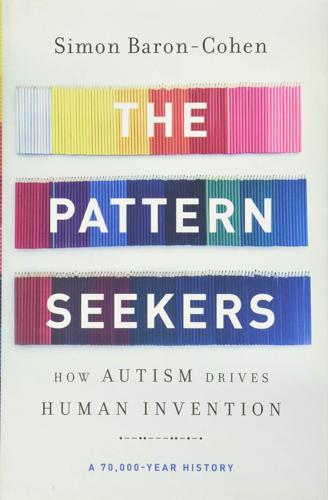
The Pattern Seekers: How Autism Drives Human Invention
by
Simon Baron-Cohen
Published 14 Aug 2020
It turns out that there are at least three hundred if-and-then moves you can do with a skateboard, and human teenagers (largely boys) engage in what seems like endless repetition in our town parks, or on the smooth concrete of the streets and plazas of many cities, to enjoy a skate.41 They are experimenting, in this case, with their own movement. Gymnasts and other sportspeople do the same. The third and final way we systemize is via experimenting within a model. A clear example was Alexander Fleming’s famous discovery of penicillin’s antibiotic properties. He used a Petri dish with bacteria in it as a model of a human wound containing bacteria. He did this because an actual wound is way too messy, damaged, complex, uncontrolled, and layered to see what is causing what. A model simplifies the real world and does so on a manageable scale you can work with.
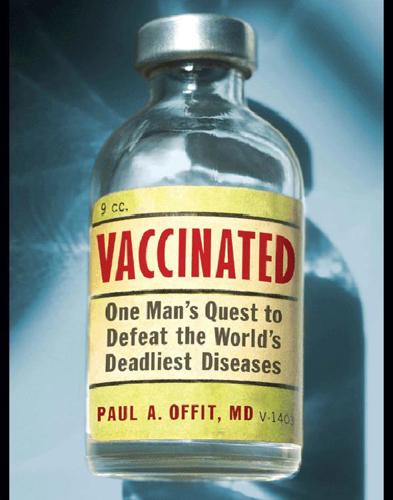
Vaccinated: One Man's Quest to Defeat the World's Deadliest Diseases
by
Paul A. Offit
Published 1 Jan 2007
They purified penicillin, described its physical and chemical properties, studied its effects in animals and humans, and showed how to mass-produce it, just in time to save the lives of tens of thousands of Allied soldiers. Ten years after abandoning his research on penicillin, Alexander Fleming won the Nobel Prize in medicine “for the discovery of penicillin and its curative effect in various infectious diseases.” Although our understanding of what penicillin is, how it works, and how it can be used to save lives couldn’t have happened without Howard Florey, few know his name. When people think of penicillin, they think of Alexander Fleming. The story of Fleming and Florey would be repeated with the discovery of the first substance to inhibit the growth of viruses and treat cancer.

P53: The Gene That Cracked the Cancer Code
by
Sue Armstrong
Published 20 Nov 2014
There was, however, more direct experimental evidence to back it up. It came from the laboratory of cancer geneticist Henry Harris, an obstinate (by his own admission) and independent-minded Australian who had been recruited in 1952 by fellow countryman Howard Florey – famous for his collaboration with Alexander Fleming in the discovery of penicillin, for which they won a Nobel Prize – to work with him at Oxford University. Talking of his move from Sydney to Oxford many years later, Harris told an interviewer, ‘I got a telephone call from Hugh Ward, the Professor of Bacteriology [at Sydney], to say that he had Florey in his office and would I like to meet him.

The Chip: How Two Americans Invented the Microchip and Launched a Revolution
by
T. R. Reid
Published 18 Dec 2007
Scientists and engineers tend to divide their work into two large categories, sometimes described as basic research and directed research. Some of the most crucial inventions and discoveries of the modern world have come about through basic research—that is, work that was not directed toward any particular use. Albert Einstein’s picture of the universe, Alexander Fleming’s discovery of penicillin, Niels Bohr’s blueprint of the atomic nucleus, the Watson-Crick “double helix” model of DNA—all these have had enormous practical implications, but they all came out of basic research. There are just as many basic tools of modern life—the electric light, the telephone, vitamin pills, the Internet—that resulted from a clearly focused effort to solve a particular problem.

Shocks, Crises, and False Alarms: How to Assess True Macroeconomic Risk
by
Philipp Carlsson-Szlezak
and
Paul Swartz
Published 8 Jul 2024
A hundred years ago, infections were the leading cause of death.2 Simple infections, beginning with as little as a blister, could easily lead to sepsis and death even for the most privileged—as happened with Calvin Coolidge Jr., the teenage son of the 30th US president, who died in 1924 after playing tennis on the White House lawn. It was the discovery of penicillin just four years later and its gradual popularization in the middle of the 20th century that sharply reduced human death risk. But the fading of infections meant that the next-most prevalent causes of death grew their share of mortality risk. Heart disease and cancer have become the two dominant drivers of human mortality since then.
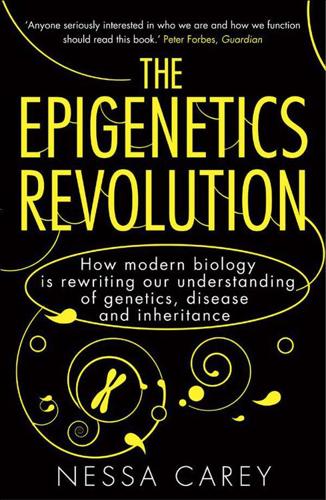
Epigenetics Revolution: How Modern Biology Is Rewriting Our Understanding of Genetics, Disease and Inheritance
by
Nessa Carey
Published 31 Aug 2011
Isaac Asimov There are multiple instances in science of a relatively chance event leading to a wonderful breakthrough. Probably the most famous example is Alexander Fleming’s observation that a particular mould, that had drifted by chance onto an experimental Petri dish, was able to kill the bacteria growing there. It was this random event that led to the discovery of penicillin and the development of the whole field of antibiotics. Millions of lives have been saved as a result of this apparently chance discovery. Alexander Fleming won the Nobel Prize for Physiology or Medicine in 1945, along with Ernst Chain and Howard Florey who worked out how to make penicillin in large quantities so that it could be used to treat patients.

The Knowledge: How to Rebuild Our World From Scratch
by
Lewis Dartnell
Published 15 Apr 2014
Mold cultures were grown in racks of shallow bedpans and makeshift extraction equipment built using an old bathtub, trash cans, milk churns, scavenged copper piping, and doorbells, all secured in a frame made from an oak bookcase discarded by the university library—inspiration, perhaps, for the scavenging and jury-rigging necessary after the apocalypse. So while the discovery of penicillin is often portrayed as accidental and almost effortless, Fleming’s observation was only the very first step on a long road of research and development, experimentation and optimization, to extract and purify the penicillin from the “mold juice” to create a safe and reliable pharmaceutical.
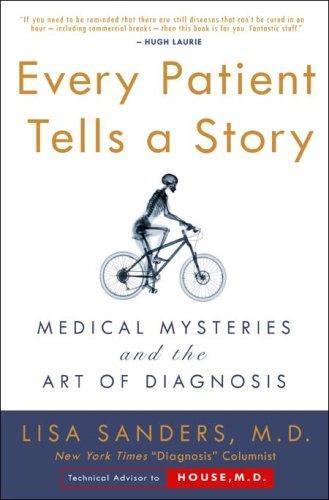
Every Patient Tells a Story
by
Lisa Sanders
Published 15 Jan 2009
Lemierre wrote up several cases of this illness, which begins with a fever and tonsillitis and progresses to a painful and often swollen neck as the infection moves into the jugular vein. Once there, the bacteria induce the formation of blood clots, which then shower the rest of the body with tiny bits of infected tissue. Before the discovery of penicillin the disease was usually fatal. The widespread use of penicillin to treat all severe sore throats during the 1960s and 1970s virtually wiped out the disease. But over the past twenty years, Lemierre’s has staged something of a comeback—an unintended consequence of a more cautious use of antibiotics and the development of new drugs—like Biaxin, which is what Tamara was given—that are easier to take but far less effective than penicillin against this potentially deadly infection.
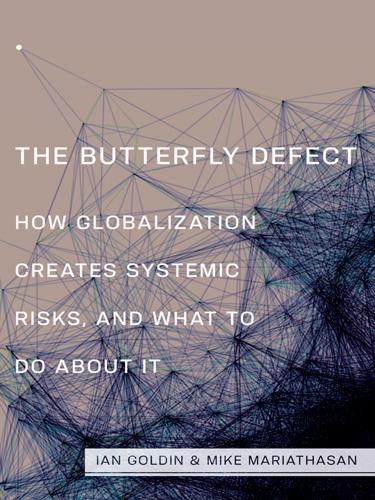
The Butterfly Defect: How Globalization Creates Systemic Risks, and What to Do About It
by
Ian Goldin
and
Mike Mariathasan
Published 15 Mar 2014
These initial organizations focused on coordinating border controls and sharing information. Most early twentieth-century bodies were not explicitly concerned with influenza pandemics. Policy makers before World War II seemed to understand that their scientific knowledge and disease-fighting capability were inadequate to combat the virulence of infectious diseases. With the discovery of penicillin in 1928, however, and the creation of WHO two decades later, the international bodies raised their ambition to that of “eliminating all communicable disease at their sources.”70 WHO’s early campaigns to eradicate infectious diseases met with some success. In what was the largest-scale international health engagement in history, an army of doctors, health professionals, and willing volunteers set out to eradicate smallpox in 1968.
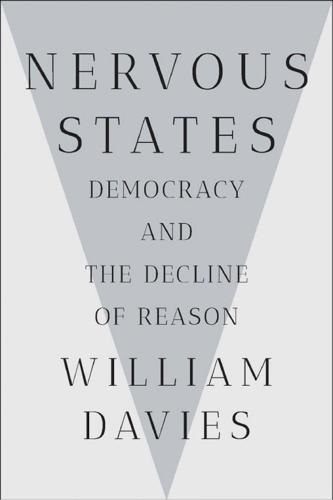
Nervous States: Democracy and the Decline of Reason
by
William Davies
Published 26 Feb 2019
Placed within the long arc of medical progress, there is no obvious reason why this should be the case. We currently live in an exceptional era, in which death can be avoided and postponed, and the degradations of the body are processes that can be prevented or managed to a large extent. Thanks to the discovery of penicillin in the mid-twentieth century, entire diseases have been wiped out. The invention of the contraceptive pill soon after meant that the most basic problems of human existence—the giving and the preserving of life itself—are under our conscious control in a way that is unprecedented. And yet this is not how things feel to many of us, and it is this that is generating much of the uncertainty and turbulence that we see played out in our politics.
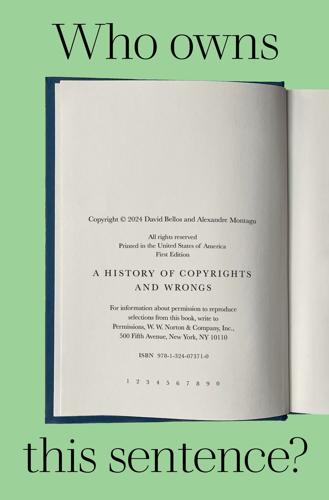
Who Owns This Sentence?: A History of Copyrights and Wrongs
by
David Bellos
and
Alexandre Montagu
Published 23 Jan 2024
For example, the now expired patent for the webpage ranking device that lies at the origin of Google’s vast fortune “was supported in part by the National Science Foundation grant number IRI-9411306-4”;56 the division of rights between the manufacturers of a Covid vaccine and the National Institute of Health is yet to be settled.57 Nowadays, two contrasting models of how inventions come about overhang discussions of the utility and effectiveness of patents in “new manufactures”. One model is provided by the serendipitous discovery of penicillin by Alexander Fleming in 1928; the other, by Thomas Edison’s invention of the light bulb in 1878. Among instances of the first model: Louis Pasteur’s chance observation that cultures of chicken cholera became harmless over time, leading to the development of vaccines for all manner of diseases; and Pierre Berthier’s observation in 1821 that alloys of iron and chrome were resistant to rust, leading to the development of stainless steel.
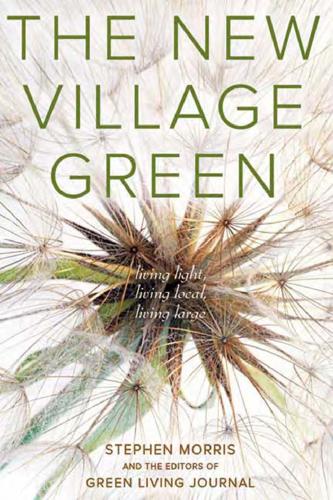
The new village green: living light, living local, living large
by
Stephen Morris
Published 1 Sep 2007
The drugs have been extracted or synthesized, but many owe their origins to the herbalist. You argue that herbal medicine isn’t nearly so steeped in superstition as some skeptics believe. For example, the folk remedy of applying bread mold to wounds to prevent infection dates back to long before scientific medicine and the discovery of penicillin. Just how much can homesteaders rely on folk cures today? Herbal remedies can help cure most of the simple illnesses. Nature, for instance, can regulate your bowels in either direction. Cascara bark is still used in a great many commercial laxatives, such as Ex-Lax. Most of the medicines for diarrhea are based on tannin... though the natural ones don’t have opiates added to relieve pain or quiet muscles.
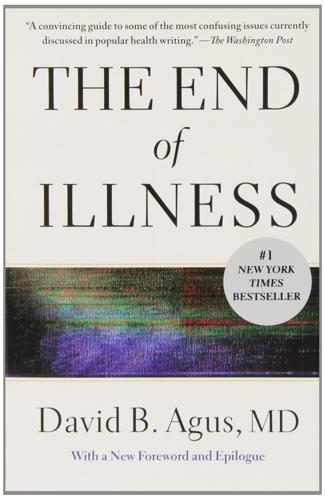
The End of Illness
by
David B. Agus
Published 15 Oct 2012
The Inescapable Statistics To understand how we’ve arrived at a place where we focus so much on DNA, and why it’s critical to respect the body as an elaborate system beyond genetics, it helps to explore the evolution of our thinking processes against the backdrop of the challenges we’ve faced—and continue to face—in our quest for health and longevity. Most of our transformative breakthroughs in medicine have occurred only recently, in the last sixty or so years. Following the discovery of penicillin in 1928, which changed the whole landscape of fighting infections based on the knowledge that they were caused by bacteria, we got good at extending our lives by several years and, in many cases, decades. This was made possible through a constellation of contributing circumstances, including a decline in cigarette smoking, changes in our diets for the better, improvements in diagnostics and medical care, and of course advancements in targeted therapies and drugs such as cholesterol-lowering statins.

10% Human: How Your Body's Microbes Hold the Key to Health and Happiness
by
Alanna Collen
Published 4 May 2015
He, like many other scientists and doctors, predicts we may soon enter a post-antibiotic era much like the pre-antibiotic era, in which surgery carried a high risk of death, and minor cuts could kill. This prediction is as old as antibiotics themselves. Sir Alexander Fleming, after making his discovery of penicillin, repeatedly cautioned that using too little of it, for too short a time, or without good reason, would bring about antibiotic resistance. He was right. Time and time again, bacteria evolve resistance to antibiotics. The first penicillin-resistant bacteria were discovered just a few years after penicillin was introduced.

Ageless: The New Science of Getting Older Without Getting Old
by
Andrew Steele
Published 24 Dec 2020
In this chapter, we’ve explored how to remove senescent cells and problem proteins. In the next, we’ll look at places where simply getting rid of things is not a sufficient treatment, and we’re going to need to replace and rebuild them in our ageing bodies. *This is a formalised version of the serendipitous experiment which gave rise to the discovery of penicillin, the first antibiotic, where blue-green fungus set up shop on a Petri dish which had accidentally been left open was found to have developed a halo around it in which bacteria wouldn’t grow. The halo was caused by a chemical secreted by the mould which was toxic to bacteria – eventually isolated and named penicillin after the Penicillium fungus in which it was discovered.
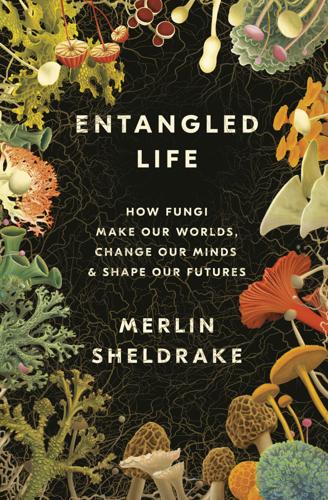
Entangled Life: How Fungi Make Our Worlds, Change Our Minds & Shape Our Futures
by
Merlin Sheldrake
Published 11 May 2020
This was the approach used by a team of researchers in Pakistan who screened soil from a city landfill site in Islamabad and found a novel fungal strain that could degrade polyurethane plastic. Crowdsourcing fungal strains may sound implausible, but it has resulted in some major discoveries. The industrial production of the antibiotic penicillin was only possible because of the discovery of a high-yielding strain of Penicillium fungus. In 1941, this “pretty golden mold” was found on a rotting cantaloupe in an Illinois market by Mary Hunt, a laboratory assistant, after the lab put out a call for civilians to submit molds.
…
Fungal effects on plant–plant interactions contribute to grassland plant abundances: evidence from the field. Journal of Ecology 104: 755–64. Bennett JA, Maherali H, Reinhart KO, Lekberg Y, Hart MM, Klironomos J. 2017. Plant-soil feedbacks and mycorrhizal type influence temperate forest population dynamics. Science 355: 181–84. Bennett JW, Chung KT. 2001. Alexander Fleming and the discovery of penicillin. Advances in Applied Microbiology 49: 163–84. Berendsen RL, Pieterse CM, Bakker PA. 2012. The rhizosphere microbiome and plant health. Trends in Plant Science 17: 478–86. Bergson H. 1911. Creative Evolution. New York, NY: Henry Holt and Company. Berthold T, Centler F, Hübschmann T, Remer R, Thullner M, Harms H, Wick LY. 2016.
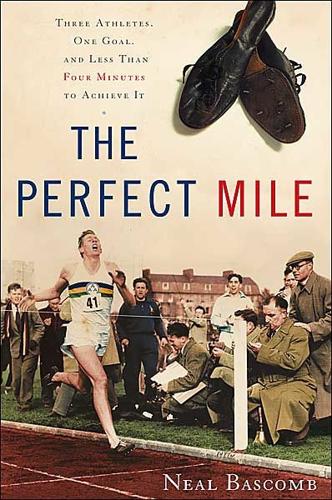
The Perfect Mile: Three Athletes, One Goal, and Less Than Four Minutes to Achieve It
by
Neal Bascomb
and
Kingfisher Editors
Published 13 Apr 2004
He lived a self-described “chaotic” existence, cooking for himself (usually a quick meat stew as well as pickled herring for protein) and trying to find spare moments for laundry and the like before heading to St. Mary’s Hospital near Paddington Station. Originally founded in 1845 to serve the impoverished “Stinking Paddington” area, St. Mary’s had evolved into one of England’s finest medical schools and research facilities, noted most famously for Alexander Fleming’s discovery of penicillin. To study at the small teaching hospital, Bannister had won the scholarship established by Lord Moran, a decorated medical officer in World War I who later served as Winston Churchill’s doctor. While dean of the school, Moran was known for recruiting amateur athletes because he believed that sport teaches character and makes for good doctors.
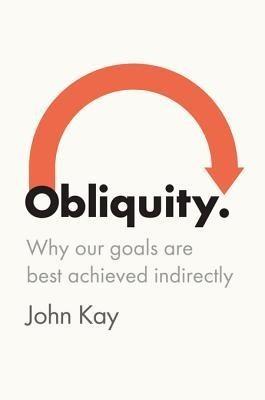
Obliquity: Why Our Goals Are Best Achieved Indirectly
by
John Kay
Published 30 Apr 2010
The nineteenth-century French scientist Louis Pasteur made numerous important scientific discoveries, including that of immunization based on artificial tissue cultures. His method of discovery was oblique: Pasteur observed the effect when a botched experiment by his assistant produced unexpected results. That fortunate accident anticipated the similar obliquity of the most important of all pharmacological discoveries, that of penicillin. Pasteur’s pioneering innovation was not even an intermediate goal. The invention of immunization was a means of realizing the high-level objective—the advance of scientific knowledge—that was made possible by an open process of experiment and adaptation. “Fortune,” Pasteur observed, “favors the prepared mind.”10 PART TWO The Need for Obliquity: Why We Often Can’t Solve Problems Directly Chapter 7 MUDDLING THROUGH—Why Oblique Approaches Succeed In 1959, Charles Lindblom described “the science of muddling through.”
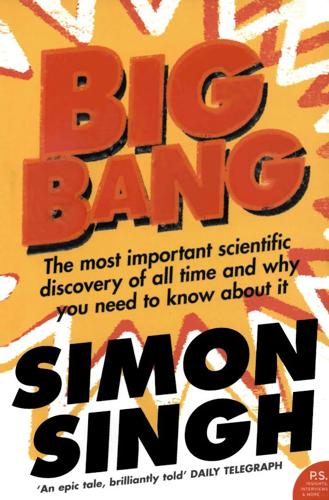
Big Bang
by
Simon Singh
Published 1 Jan 2004
Walpole also highlighted this in his original letter when he described serendipity as the result of ‘accidents and sagacity’. Furthermore, those who want to be touched by serendipity must be ready to embrace an opportunity when it presents itself, rather than merely brushing down their seed-covered trousers, pouring their failed superglue down the sink or abandoning a failed medical trial. Alexander Fleming’s discovery of penicillin depended on a speck of penicillium mould floating in through the window, landing in a petri dish and killing off a bacterial culture. It is highly likely that many microbiologists had previously had their bacterial cultures contaminated by penicillium mould, but they had all discarded their petri dishes in frustration instead of seeing the opportunity to discover an antibiotic that would save millions of lives.
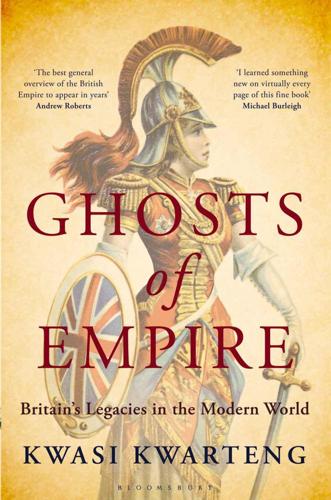
Ghosts of Empire: Britain's Legacies in the Modern World
by
Kwasi Kwarteng
Published 14 Aug 2011
Unusually for their class and for the time, the boys, first under their father and later abroad, had a modern education, learning Mathematics, History, French and German, instead of Latin and Greek.4 A defining moment in the life of the young family came in 1863, when Frances Kitchener’s tuberculosis worsened and the doctors concluded that the damp conditions of south-west Ireland would never allow her to recover. The Colonel, with characteristic decisiveness, sold the estate and moved the family to Switzerland, which the doctors had recommended for its mountain air. This was a common prescription for tubercular and bronchial diseases in an age before the discovery of penicillin. The Kitchener family soon settled in the little spa town of Bex and the boys started attending a French school near Geneva. The move to Bex failed to improve Frances Kitchener’s health, and, in a desperate final attempt to remedy her condition, the family moved once again to Montreux, a town on the north-east shore of Lake Geneva, where a colony of British invalids and retired officers could be found.

The Code Breaker: Jennifer Doudna, Gene Editing, and the Future of the Human Race
by
Walter Isaacson
Published 9 Mar 2021
He and Doudna would talk every day about how to crystallize the RNA, and soon they were continuing their discussions over coffee and sometimes dinner. One breakthrough came as a result of the random things that often happen in science: a slight blunder, like the mold that got on Alexander Fleming’s Petri dishes and led to the discovery of penicillin. One day a technician was working with Doudna to try to make crystals, and she put the experiment into an incubator that was not working properly. They thought the experiment was spoiled, but when they looked at the samples through a microscope they could see crystals growing. “The crystals had RNA in them and were beautiful,” Doudna recalled, “and that was the first breakthrough showing us that to get these crystals we had to elevate the temperature.”

The Identity Trap: A Story of Ideas and Power in Our Time
by
Yascha Mounk
Published 26 Sep 2023
Starting in the early modern period, many thinkers came to believe that learning and technology would help to remedy these injustices. But even as the human ability to understand and manipulate the natural world rapidly expanded, mass atrocities and periods of intense suffering persisted. The twentieth century saw the discovery of penicillin and DNA, the invention of the space station and the internet. It also bore witness to two world wars that claimed more than 100 million victims; to the first ever attempt to eradicate an entire ethnicity through industrial means; to genocides in Armenia and Rwanda; and to politically induced famines that killed millions of people in China and Bengal, in Ukraine and Kazakhstan, in Greece and Ethiopia.
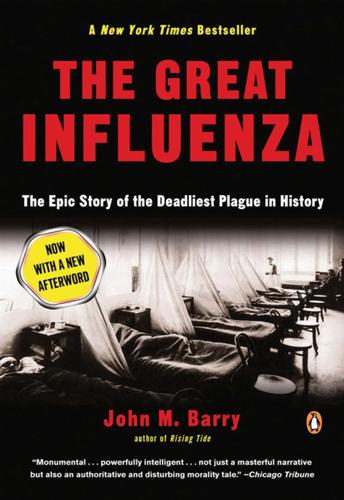
The Great Influenza: The Story of the Deadliest Pandemic in History
by
John M. Barry
Published 9 Feb 2004
CHAPTER TWENTY-THREE LABORATORIES EVERYWHERE had turned to influenza. Pasteur’s protégé Émile Roux, one of those who had raced German competitors for a diphtheria antitoxin, directed the work at the Pasteur Institute. In Britain virtually everyone in Almroth Wright’s laboratory worked on it, including Alexander Fleming, whose later discovery of penicillin he first applied to research on Pfeiffer’s so-called influenza bacillus. In Germany, in Italy, even in revolution-torn Russia, desperate investigators searched for an answer. But by the fall of 1918 these laboratories could function only on a far-reduced scale. Research had been cut back and focused on war, on poison gas or defending against it, on preventing infection of wounds, on ways to prevent diseases that incapacitated troops such as “trench fever,” an infection related to typhus that was not serious in itself but had taken more troops out of the line any other disease.
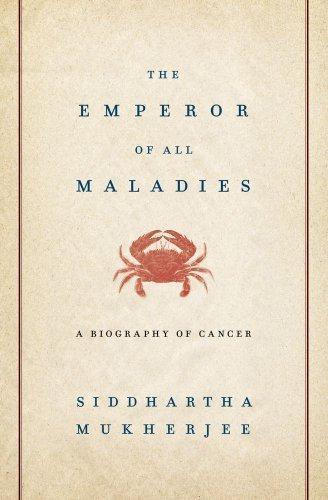
The Emperor of All Maladies: A Biography of Cancer
by
Siddhartha Mukherjee
Published 16 Nov 2010
In 1997, the NCI director, Richard Klausner, responding to reports that cancer mortality had remained disappointingly static through the nineties, argued that the medical realities of one decade had little bearing on the realities of the next. “There are far more good historians than there are good prophets,” Klausner wrote. “It is extraordinarily difficult to predict scientific discovery, which is often propelled by seminal insights coming from unexpected directions. The classic example—Fleming’s discovery of penicillin on moldy bread and the monumental impact of that accidental finding—could not easily have been predicted, nor could the sudden demise of iron-lung technology when evolving techniques in virology allowed the growth of poliovirus and the preparation of vaccine. Any extrapolation of history into the future presupposes an environment of static discovery—an oxymoron.”

Betrayal of Trust: The Collapse of Global Public Health
by
Laurie Garrett
Published 15 Feb 2000
Abbott, Mary, 453 Abdullah, Prince, 490 abortions, 136–37, 224, 247, 298, 380, 419 acid rain, 154, 162 Adelman, Kenneth, 496 Afghanistan, Soviet war with, 172, 176–77, 181, 186 Africa AIDS in, 58, 474, 563, 578–80 bushmeat trade in, 109–10, 606 disease surveillance lacking in, 104 insurmountable problems in, 121 nationalism in, 56 natural resources of, 109, 111, 121, 598–99 rain forest in, 59–60, 100–102, 103, 105, 108–9 wealthy nations uninterested in, 104–5 see also specific nations aging and herd immunity, 559 and mental health, 573 of U.S. population, 322, 344, 377–78, 484 of world population, 558–60, 573, 747 Agnes, Sister, 71–72 AIDS ACT UP and, 474 in Africa, 58, 474, 563, 578–80 cryptococcus and, 279 in India, 47, 580 search for a cure, 581 and TB, 193–94 see also HIV Aid to Families with Dependent Children (AFDC), 344, 384, 385, 388 Akhmatova, Anna, 621–22 Albright, Madeleine, 111 alcoholism child abuse and abandonment, 139–42 in former Soviet Union, 124, 127, 129, 131, 135–43, 202, 212, 216, 254, 257 homelessness and, 135, 140 Native Americans and, 386 Prohibition and, 305–6 Alexander, Father, 139–40 Alfimov, Michael, 253 Alibekov, Kanatjan (Ken Alibek), 513–14, 519, 521–22, 738–39 America, see United States American Medical Association (AMA), 276, 291, 312, 316, 318, 324, 328, 342, 345, 364–67, 378–79, 567, 665, 675 American Public Health Association, 303, 339, 342, 351–52, 365, 555 Andropov, Yuri, 123, 246 Annas, George, 573 anthrax kill method of, 527 vaccine, 299, 523–25, 532 weaponized, 491, 496, 499, 500, 502–4, 512, 520–22, 523, 532–33, 736 antibiotics black market in, 58, 125, 181, 189, 229 child deaths and, 619 discovery of penicillin, 325–26 in livestock, 467–69, 722 microbes resistant to, 32, 53, 179–82, 193, 195, 196, 229, 237, 239–40, 242, 265, 271–81, 327, 458, 467, 468–69, 471, 472, 484, 520, 534, 577–78, 588, 719 plague and, 21, 31, 32, 34–35, 40–41, 44, 45, 595 antibiotics (continued) postantibiotic era in, 271 self-medication and misuse of, 181, 183, 192–93, 229, 240, 276, 467–68, 573 STDs and, 228–29, 326, 353 TB and, 188–90, 193, 194, 196, 201, 326 antibodies, monoclonal, 280 antiseptics, discovery of, 295 antisera, 279–80 Anti-Terrorism Act (1996), 545 antitoxins, discovery of, 295 Aphanasiev, Viktor, 199–200 Appel, Willa, 280 Arafat, Yasir, 490 Asahara, Shoko, 495 Asia economy of, 554, 561 HIV and, 580 influenza from, 370–71, 684 asthma, 161, 163 Asvall, Jo, 172 Aum Shinrikyo, 495–96, 497, 499, 528, 541, 733 autoclaves, 274 Axelrod, David, 407 Baavsky, Grigory, 213–14 bacteria, weaponized, 491–93, 498–99, 501–3, 519–21, 522–23 Baltimore, David, 569 Balzhirov, Blair, 192 Barabanov, Leonid, 235 Barakanfitiye, Deo, 99 Baumgartner, Leona, 332, 339–41, 342, 347, 356, 370, 673 Belgian Congo, see Zaire Bellamy, Carol, 214 Bem, Pavel, 214–15 Berezovsky, Boris, 168 Berkelman, Ruth, 37, 601 Berlin Wall, fall of, 227, 251, 442, 554 Bernard, Kenneth, 731 Biggs, Hermann, 11–12, 276, 279, 293, 296–301, 302, 307, 315, 335, 345, 370, 421, 425 Biological Weapons Convention, 492, 497, 503, 514 Biopreparat, 492–94, 510–20, 521–22 biotechnology, discoveries in, 525–27, 568–70 biowarfare, 486–550 antiwar demonstrations and, 500–1 Cold War and, 500 Congress and, 45, 545, 547 Gulf War and, 523 in Japan, 495–96 law enforcement agencies and, 536–40, 546–48 in Middle East, 489, 497–99, 501–3, 523, 734 public health and, 488–89, 494–95, 504–7, 527–43, 546–50 rogue nations and, 490–91, 496, 503, 529 terrorists and, 488, 490, 495–97, 501–2, 508, 528–29, 532–41, 546 transparency in, 735–36 U.S. debates on, 505–10 in World War I, 499 in World War II, 499–500 bioweapons, 486–550 CDC and, 488, 492, 495, 515, 518, 530–32, 535 destruction of, 492, 501 detection devices for, 545 difficulty of development of, 494, 495, 500–1, 742 dual use of, 522 as future proliferation concern, 503–4, 742 genetic engineering of, 520–21, 526–27 in international arms market, 494 Internet and, 522, 524, 543–44 manmade superbugs, 491, 511, 520–21, 526, 528 nations possessing, 526 selected ethnic targets of, 526, 528 Soviet, 488, 492–94, 496, 504–5, 510–22 U.S. militants and fanatics with, 488, 543–45 U.S. stockpiles of, 500, 501 vaccines for, 508, 509, 523–25, 530–32, see also specific germs birth control pill, 361–62 Black Death (plague), 283, 551–52 Blair, Tony, 736 Blau, Sheldon, 280–81 blood supply donors screened for, 220, 403 from health-care workers, 222 infections from, 206, 220, 403, 697–98 privacy and, 405 B’nai B’rith headquarters, 538–39 Bocharov, Evgeny, 221–22 Boesch, Cristophe, 100 Bogdonov, Mikhail, 146 Bompenda, Lonyangela, 54, 87, 97 Bonnet, Marie-Jo, 68–70, 90 Borodai, Alexander, 160 botulinum toxin, weaponized, 499, 501, 506, 543, 545 botulism toxin, weaponized, 496, 499, 522, 545 Bourganskaia, Elena, 238, 243, 252–53 Boyko, Tatyana, 150, 221, 242 Brazil, HIV and, 581 Brezhnev, Leonid, 122–23, 246, 492 Briko, Nikolay, 235 bronchitis, 161 brucella, weaponized, 532 Bruckova, Marie, 219 Brundtland, Gro Harlem, 6, 563, 586 bubonic plague, 20–24, 26, 35–36, 41–42, 44 Bumgarner, Richard, 194 Burkitt, Denis, 392–93, 395 Bush, George, 407–9, 412–14, 416, 419, 421, 427, 429, 438, 497, 512, 514, 700 bushmeat consumption, 109–10, 606 Butler, Richard, 502 Calain, Philipe, 82, 84, 86 Califano, Joseph, 379 California air quality in, 320–22 antivaccine movement in, 301, 303 Great Depression and, 311–14 HIV in, 479–82, 580 immigrants in, 5–6, 381, 448–50, 665 Medi-Cal in, 351–52, 383, 392, 401 plague in, 314 population in, 320 Proposition 13 in, 380–82, 392, 716 unemployment in, 441–42 see also Los Angeles County Californios, 654 Cameron, Neil, 103, 605 Cameroon, 100, 108, 109 Campbell, Grant, 37 Campbell, James K., 528, 534 cancer causes of, 11, 144–45, 150–51, 322 Chernobyl and, 144–48, 150–52 Delaney Clause and, 359–60 drug-resistant, 279, 393 industrial waste and, 155, 159, 161 lifestyle and, 393–97, 485 mortality impact of, 340 no safe limit for, 359 research on, 319, 567–68 smoking and, 355–58 War on Cancer, 363, 393 cardiovascular disease, see heart disease Carnegie, Andrew, 303 Carson, Rachel, 354 Carter, Alvin, 538–39 Carter, Jimmy, 370, 373–79, 685 CDC (U.S.
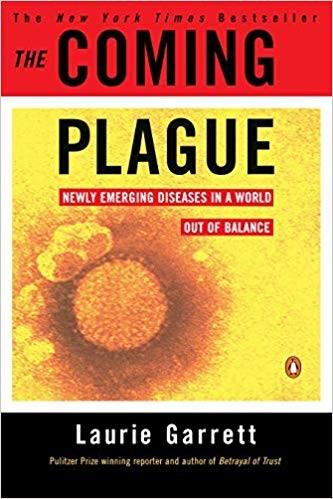
The Coming Plague: Newly Emerging Diseases in a World Out of Balance
by
Laurie Garrett
Published 31 Oct 1994
On mobile plasmids that could be passed from one H. ducreyi to another were genes that made the microbes resistant to ampicillin, sulfonamides, chloramphenicol, and tetracyclines. As a result, treatment of chancroid would, by the mid-1980s, be difficult.25 In 1982 H. H. Handsfield focused on why U.S. medicine had been so slow to deal with this rise in all sexually transmitted diseases: … following World War II and the discovery of penicillin, many doctors and public health authorities believed that syphilis and gonorrhea, then the most important known forms of sexually transmitted diseases in the United States, would shortly be all but abolished. It was widely felt, therefore, that the problem could be safely left to public venereal disease clinics.

Warnings
by
Richard A. Clarke
Published 10 Apr 2017
Dana Bash and Evan Glass, “Huckabee Refuses to Retract ’92 Remarks on AIDS Patients,” CNN, Dec. 10, 2007, www.cnn.com/2007/POLITICS/12/10/huckabee.aids (accessed Oct. 8, 2016); and Jim Morrison, “HIV Quarantines? They Already Exist, Advocate, May 15, 2013, www.advocate.com/commentary/2013/05/15/op-ed-hiv-quarantines-they-already-exist (accessed Oct. 8, 2016). 11. “Discovery and Development of Penicillin,” American Chemical Society, https://www.acs.org/content/acs/en/education/whatischemistry/landmarks/flemingpenicillin.html. 12. While human misuse of antibiotics is certainly one cause of antibiotic resistance, there is a complex interplay of reasons. To take just one example, 80 percent of antibiotics are used on farm animals to increase growth. 13.

QI: The Book of General Ignorance - The Noticeably Stouter Edition
by
Lloyd, John
and
Mitchinson, John
Published 7 Oct 2010

The Great Halifax Explosion: A World War I Story of Treachery, Tragedy, and Extraordinary Heroism
by
John U. Bacon
Published 7 Nov 2017

The Rise and Fall of American Growth: The U.S. Standard of Living Since the Civil War (The Princeton Economic History of the Western World)
by
Robert J. Gordon
Published 12 Jan 2016
In that era, pharmacists actually compounded the ingredients of drugs, instead of merely reselling drugs manufactured by large pharmaceutical firms. Trial and error by consumers had more effect on purchase decisions than any influence of government regulation.60 The rate of discovery of effective pharmaceutical drugs increased rapidly after the 1935 discovery of sulfonamide drugs and penicillin during World War II. Because most of the effects of this acceleration were felt after 1940, it is treated in chapter 14. The regulatory environment was radically changed by the successor to the 1906 food and drug legislation, which was passed in 1938 after years of debate. The first important change was the requirement that the FDA approve the introduction of newly developed drugs.
…
The first antibiotic, penicillin was versatile enough to cure “almost instantly such diseases as pneumonia, rheumatic fever, and syphilis, which had been greatly feared and often fatal.”14 Indeed, cases of syphilis, which occurred at a rate of 372 per 100,000 people in 1938, had fallen to 154.2 by 1950 and to sixty-eight in 1960, a testament to the antibiotic’s ability to kill the infection before it spread.15 Pneumonia, previously called the “Captain of the Men of Death,” was now easily curable, and by 1954 it caused only a quarter as many deaths of children ages 1–4 as in 1939. The effect on rheumatic fever and rheumatic heart disease was even greater, with the death rate falling 90 percent between 1940 and 1960.16 The discovery and subsequent development of penicillin came about largely by accident when, one night in 1928, the Englishman Alexander Fleming discovered a large patch of mold surrounded by a sterile ring on a dirty dish that had been left out for weeks. After finding that the mold had killed the growth of some types of bacteria, Fleming began experimenting to uncover the antibacterial feature of the mold.